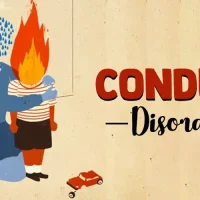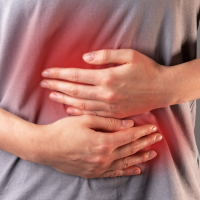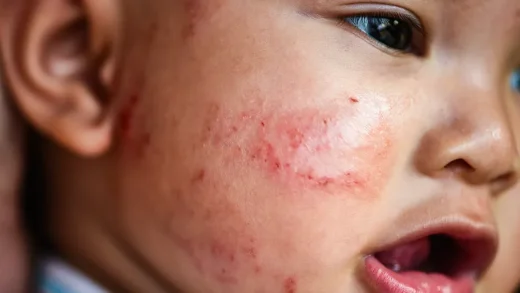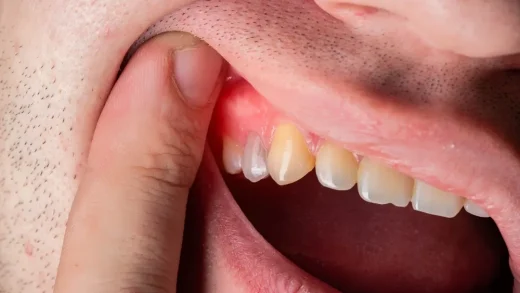What is an abdominal migraine?
Periods of moderate-to-severe abdominal (belly) pain are a common symptom of abdominal migraine. One to seventy-two hours pass between the episodes. On average, they last 17 hours. The pain can be severe enough to interfere with daily activities.
It doesn’t cause head pain, but a person can experience a traditional migraine headache and an abdominal migraine at the same time.
Researchers believe there’s a connection between migraine headaches and abdominal migraines. The conditions seem to have similar triggers, relieving factors, and treatments. They may have a similar cause as well. About 24% of people who have abdominal migraines have migraine headaches at some point in their lives, compared to 10% of the general U.S. population.
Who do abdominal migraines affect?
Although they can affect adults as well, children under the age of ten are the most common victims of abdominal migraines.
Seven years old is the typical onset age. It is more prevalent in women and those who were born with a female assigned than in men and those who were born with a male assigned.
What are the risk factors for abdominal migraines?
Your child’s risk of developing abdominal migraines is increased if there is a family history of migraine headaches. A first-degree relative, such as a biological parent or sibling, accounts for over 65% of children with abdominal migraines.
Anxiety and depression are examples of psychosocial variables that can raise a child’s chance of experiencing both abdominal and head migraines.
How common is an abdominal migraine?
Approximately 1% to 4% of school-aged children have abdominal migraines. Researchers think this estimate might be low, as the condition may be underdiagnosed.
Abdominal migraine is rare in adults.
Symptoms and Causes
What are the symptoms of an abdominal migraine?
Abdominal (belly) pain is the primary symptom of an abdominal migraine attack. Usually, the pain is located around your belly button in the center of your abdomen. It may feel like a dull ache or soreness and can be moderate or severe.
The episodes usually start suddenly and end abruptly. They can last between one and 72 hours.
Other symptoms that you or your child may experience during an episode include:
- A pale appearance (pallor).
- Loss of appetite.
- Nausea.
- Vomiting.
- Headache.
Certain individuals may encounter additional migraine symptoms, such as photophobia (sensitivity to light) and phonophobia (sensitivity to noise).
There can be weeks or months in between episodes. Usually, there are no symptoms in between episodes.
What causes abdominal migraines?
Researchers don’t know yet what causes abdominal migraines, but they have a few hypotheses.
The main theory is that individuals with abdominal migraines have nervous systems that are excessively sensitive, particularly the primary sensory and central spinal neurons. Researchers believe that an individual may be more susceptible to this hypersensitivity due to specific genetic, psychosocial, and environmental factors.
The body responds to certain triggers, like motion sickness or stress, by abnormally releasing neurotransmitters, or chemical messengers. One particular neurotransmitter, serotonin, may be the cause of abdominal pain.
What triggers abdominal migraines?
Certain situations may trigger episodes of abdominal migraine. These can vary from person to person.
Common triggers include:
- Stress, such as from school or family life,.
- Poor sleep and irregular sleep habits.
- Prolonged fasting.
- Dehydration.
- Travel and motion sickness.
- Exercise.
- High-amine foods, such as citrus fruits, chocolate, cheese, salami, and ham.
- Foods with additive flavoring, coloring, and monosodium glutamate (MSG).
- Flashing lights.
- Consuming over 200 milligrams of caffeine.
Diagnosis and Tests
How is an abdominal migraine diagnosed?
Since stomach pain can be caused by a variety of conditions and circumstances, diagnosing abdominal migraine can be challenging.
Furthermore, kids might find it hard to explain their discomfort and distinguish these symptoms from a regular stomachache.
Abdominal migraine cannot be diagnosed by any lab or imaging test. Instead, in order to diagnose your child, medical professionals must have a complete understanding of both your child’s medical history and symptoms.
Providers also need to rule out other health conditions that cause similar symptoms, including:
- Cyclic vomiting syndrome.
- Stomach ulcers.
- Crohn’s disease.
- Irritable bowel syndrome (IBS).
- Bladder or kidney conditions.
Your child’s provider will:
- Review their medical history and your family’s medical history.
- Do a physical examination.
- Order tests, such as an abdominal ultrasound or X-ray, to rule out other conditions.
Management and Treatment
How is abdominal migraine treated?
The abdominal migraine has no known treatment. Rather, the primary goal of treatment is to avoid episodes. Once an abdominal migraine attack starts, there are additional methods for treating it.
Strategies to prevent abdominal migraines
Recognizing your child’s triggers is essential to preventing abdominal migraine episodes. Keeping a journal to document symptoms can aid in identifying potential triggers.
In general, preventative measures include:
- Managing stress: Practicing healthy coping skills can help manage stress. A type of psychotherapy (talk therapy) called cognitive behavioral therapy (CBT) can also help with stress management.
- Travel tips: It’s important to avoid motion sickness when traveling. This could include limiting long vehicle trips with frequent stops and avoiding high altitudes.
- Getting quality sleep: Getting quality sleep is essential for people with abdominal migraine. Having a regular bedtime routine and good sleep hygiene can help prevent sleep disturbances, which can trigger episodes.
- Avoiding visual triggers: Sparkling and flashing lights can trigger episodes, so avoid them as much as possible.
- Avoiding food triggers: Try to identify any foods that seem to trigger episodes and remove them from your/your child’s diet. Also, try to avoid eating foods containing MSG and additive flavorings and colorings.
Medications to prevent episodes
There are currently no approved drugs for the treatment of abdominal migraine by the Food and Drug Administration (FDA) in the United States. On the other hand, some medical professionals might prescribe some drugs off-label. Abdominal migraines can be prevented by taking many of the same medications that help prevent migraine headaches.
Studies have shown that the following medications may help prevent abdominal migraine episodes:
- Cyproheptadine.
- Pizotifen.
- Propranolol.
- Flunarizine.
Treatment for abdominal migraine episodes
Resolving your child’s abdominal migraine symptoms may involve placing them to rest in a quiet, dark area while applying an ice pack or cool cloth to relieve their discomfort.
To help treat episodes, your child’s doctor may also suggest or prescribe any of the following drugs:
- Nonsteroidal anti-inflammatory drugs (NSAIDs), like ibuprofen or aspirin.
- Antinausea medications.
- Triptans (serotonin receptor agonists).
Outlook and Prognosis
What is the prognosis for abdominal migraine?
Around puberty, children with abdominal migraines typically begin to outgrow the condition. By late adolescence, about 60% of kids no longer experience episodes.
But later in life, either as adolescents or adults, about 70% of children with abdominal migraines will experience migraine headaches.
Living With
How can I help my child with an abdominal migraine?
Migraine in the abdomen can be upsetting and have an impact on your child’s school and social life. It is crucial to support your child’s health and to have faith in them as a result.
Discuss your child’s symptoms with their medical professional. Bring up any family history, particularly any migraine episodes, and mention that stomach migraines may be the source of your child’s symptoms.
Although it may take some time, make an effort to record potential episode triggers and, if at all possible, remove them to stop attacks in the future.
When should my child see a healthcare provider if they have an abdominal migraine?
Make sure to contact your child’s healthcare provider if they have vomited multiple times during an abdominal migraine episode. In order to treat the vomiting and stop or treat dehydration, they might need to be admitted to the hospital.
A note from DocAdvice
Witnessing your child suffer is upsetting. Being an advocate for them and discussing abdominal migraine management strategies with their healthcare provider is the best thing you can do to support them. It frequently has distinct triggers, so over time, you can identify the triggers by keeping a journal of events, circumstances, and symptoms.





















